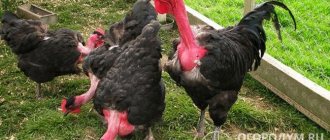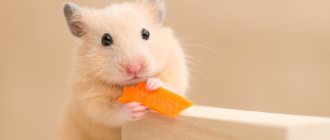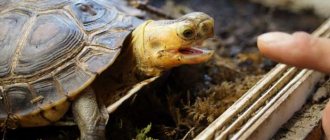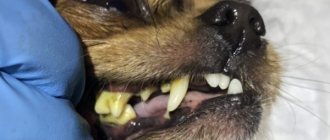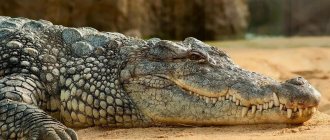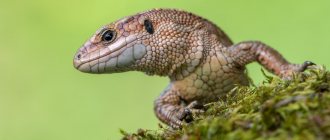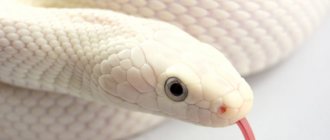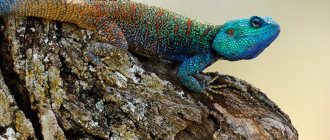Reptiles are quite a bold choice for home keeping. Surely, if you get such a pet, not everyone will understand you. But we can confidently say that only strong people, who are not influenced by the opinions of others, have a reptile at home.
The main feature of these pets is that tactile contact is not important for them, and excessive attention is more harmful than beneficial for them. That is why reptiles can be afforded by people who are often not at home. But this does not mean that this pet cannot be your friend, it can. If you take proper care, if you provide the right conditions, if you choose an animal with a calm disposition, it may well become an excellent friend for all family members.
Axolotl (water dragon)
These are the most interesting animals for an aquarium. Axolotls reach only 15 cm in length, in rare cases - 30 cm. In appearance, they are slightly reminiscent of salamander larvae due to the characteristic external gills and caudal fin. The head of a water dragon is flattened and wide, there are no eyelids on the eyes, and there are small teeth. The limbs are poorly developed.
Water dragons come in 4 colors: 2 natural shades and 2 artificial ones. Natural colors are brown with spots and black. The ones that have been bred include light pink and gold.
In the wild, the axolotl feeds on insects, small fish, and worms. In captivity, its diet may consist of trout pellets, bloodworms, and live or thawed earthworms. The water dragon likes small shrimp and beef liver.
Axolotls determine the location of food by smell. Having discovered it, they pull it in with great force. You should not place other animals in the same aquarium with a water dragon: small neighbors can be eaten, and large fish can cause harm (they often gnaw on the gill stalks and appendages of the axolotl while it sleeps, which can lead to infection).
The water dragon lives at a temperature of +14...+20°C. If the animal is sick, the indicator should be reduced to +10°C to avoid an increase in the pet’s appetite. To create a microclimate in the aquarium, it is recommended to use a special cooling unit, a filter and a water purifier from chlorine.
1 individual should be kept in a 50 liter container with a water level of 150 mm. It is permissible to use an aerator. It is necessary to change 20% of the water weekly. It is not advisable to line the bottom with fine gravel, because the axolotl can swallow stones.
The aquarium should contain floating plants that the pet will use as shelter, and small caves. Too much light is not required because the water dragon is a nocturnal animal.
Lizards
Unlike snakes, most lizards (with the exception of some legless forms) have more or less developed limbs. Although legless lizards are similar in appearance to snakes, they retain a sternum, and most have limb girdles; unlike snakes, the left and right halves of the jaw apparatus are motionlessly fused.
In legless lizards, the eyes are usually equipped with movable separate eyelids, while in snakes the eyelids are fused, forming transparent “lenses” over the eyes. They also differ in a number of other features, such as the structure and structure of the scales.
Many species of lizards are capable of throwing off part of their tail (autotomy). After some time, the tail is restored, but in a shortened form. During autotomy, special muscles compress the blood vessels in the tail, and almost no bleeding occurs.
Most lizards are predators. Small and medium-sized species feed mainly on various invertebrates: insects, arachnids, mollusks, worms. Large predatory lizards (monitor lizards, tegus) attack small vertebrates: other lizards, frogs, snakes, small mammals and birds, and also eat the eggs of birds and reptiles. The largest modern lizard, the Komodo dragon (Varanus komodoensis), attacks large animals such as deer, wild pigs and Asian buffalo. Some carnivorous species of lizards are stenophages, that is, they specialize in eating a specific type of food.
For example, the moloch (Moloch horridus) feeds only on ants, and the pink-tongued skink (Hemisphaeriodon gerrardii) in nature eats exclusively terrestrial mollusks.
Some large iguanas, agamidae and skink lizards are completely or almost completely herbivorous. These species eat fruits, leaves, young shoots and flowers of plants.
Among lizards there are many omnivorous species that use both animal and plant foods (for example, blue-tongued skinks, many agamas). Madagascar day geckos, in addition to insects, willingly eat nectar and pollen from flowers and the pulp of juicy ripe fruits.
In the Lizards section: geckos, agamas, iguanas, monitor lizards, chameleons, skinks,…
Keeping newts at home
This is a group of tailed amphibians, which have a large number of species and subspecies. Only a few of them are suitable for home keeping.
Lissotriton vulgaris
The common newt grows to a length of only 7-11 cm. Females are slightly smaller than males. The body color is from greenish to brown, the belly is yellowish or light orange. During the mating season, males develop a crest.
For a comfortable living, a newt needs an aquarium with a volume of 15 liters or more. Inside you need to arrange 1 or several islands, because the animal comes onto land from time to time. The water temperature can vary from +18 to +22°C. For the wintering period it is reduced to +5..+8°С.
The soil must be of a coarse fraction so that the newt cannot swallow individual particles. To maintain the nitrogen cycle, you need to place live plants in the terrarium. Dense thickets also create conditions for reproduction. The female lays eggs in them and tucks the leaves so as to provide reliable protection for the offspring.
You need to change 15-30% of the water per week. A filter is required that will pump the entire volume of the aquarium 6-10 times in an hour.
Newts are predators, so they happily feast on small live fish, earthworms, and crickets. They eat frozen bloodworms well. You can give pieces of low-fat fish and shrimp. Young animals are fed daily, adults - 2-3 times a week. It is recommended to periodically give vitamin complexes and calcium.
Newts can molt. Amphibians then eat their old skin.
Keeping them with fish is problematic because the latter love warmer water. For the winter, the newt will have to be placed in a separate terrarium. In addition, the amphibian can eat small fish.
- Newts sometimes get sick. Pathologies arise due to infections, parasites and fungi. The most dangerous disease is “red leg” or sepsis.
- The main symptom is bleeding under the skin of the abdomen and upper paws, which is why the latter acquire a bright red color.
- The sick animal should be immediately isolated and therapy should be started.
- First, it is recommended to go to a veterinary clinic and get tested.
Pleurodeles waltl
The spiny newt is larger than Lissotriton vulgaris.
Its length is 23 cm, so the amphibian needs a larger terrarium. When keeping this species, it is necessary to take into account that on the sides of the animal there are pointed ends of the ribs, which can secrete a toxic substance.
The liquid causes an allergic reaction. It is better not to take it with your bare hands.
Triturus cristatus
The crested newt is a medium-sized species of amphibian, growing up to 18 cm.
Representatives have an intermittent crest. Newt skin contains poisonous glands.
Reptiles: which ones can you have at home?
The variety of animal species that people keep as pets increases every year, and the question often arises: is it worth keeping pet reptiles? Some people get cats and dogs, others are delighted with hamsters, guinea pigs or parrots. But there are originals who decide to keep reptiles at home. Which of these exotic animals is suitable for keeping at home?
Reptiles as a pet cause a mixed reaction among those who have not encountered these animals at home. Many consider such pets to be dangerous, unpleasant to the touch and unsuitable for human habitation. Moreover, some of these reptiles are quite harmless and long-lived, while others are overly demanding to care for or pose a certain danger to humans.
My affectionate cold-blooded beast
In fact, there are not many reptiles that can get along with humans. The following types of animals can be pets:
- Snakes;
- Lizards;
- Turtles.
Many people mistakenly classify frogs as reptiles. Of course, they also have a place in a home terrarium, but these creatures belong to amphibians or amphibians. As for crocodiles, such reptiles are quite rare as pets and require increased attention due to their predatory nature (a large enclosure and a special diet are required).
You might be interested
General recommendations when choosing a pet reptile
At first glance, choosing a reptile is quite simple, but take your time. To get started, consider a few important points.
Conditions of detention. Reptiles are cold-blooded and therefore need to create an appropriate habitat (terrarium, filler, necessary microclimate with lighting, optimal humidity and temperature).
Character. Reptiles, in principle, do not like human contact, but some species tolerate being carried more calmly. Therefore, not every reptile is suitable for small children - it is better to get a kitten or puppy.
Hibernation. Reptiles, due to their natural characteristics, hibernate, lasting from one to several months.
Pet sizes. It is easier to care for small and medium-sized reptiles, and the dimensions of the terrarium for such an animal are not so large.
Necessary diet. Reptiles mostly feed on specialized foods, insects and vegetables, but most snakes will need freshly killed rodents. Can you personally feed your pet this way?
Budget. This includes the cost of the reptile itself and the money you will pay for food, the services of a specialized veterinarian (not every one of them specializes in reptiles), and the necessary equipment.
Danger of the species. Beginners should not even think about buying venomous snakes, as these reptiles require a well-designed and constructed terrarium and professional care. Some turtles have strong jaws, so you shouldn't poke your fingers into their mouths or try to kiss them. Lizards can bite if treated disrespectfully.
Decide what you want from a reptile?
Most reptiles will have to be kept in a terrarium at all times, and if you let them out to roam around the house, you will have to constantly monitor the pet so that, for example, it does not hide or scare a child. But with proper care and attention, a reptile can easily become a favorite of all family members and guests.
Hand snake
There are many popular superstitions associated with these reptiles, which shed their skins, just like with spiders. Not every one of your household members, friends or guests will appreciate being in the vicinity of a snake, even if it is confined in a terrarium.
There are quite a few advantages of keeping creeping pets:
- Silence;
- No allergic reactions;
- Gracefulness;
- Only rare individuals require special care.
Remember the main feature of keeping a snake - almost all types of these reptiles need live food. Not every owner will like the scene of a crawling pet eating a frog, a small mouse or a snail. However, you will have to do this from one to several times a month (after such a meal, you should not handle the animal for several days).
Also keep in mind that most snakes grow quite quickly, and a miniature reptile can increase in size by 5-20 times. This is especially important when purchasing a terrarium, since a large animal will be very cramped.
Contrary to prevailing stereotypes, snakes have different characters: there are slow and playful individuals, sociable and solitary ones, tamed ones and those with a complex character. The following crawling pets are popular:
- Corn snake . The most common reptile in home terrariums has a red body, diluted with white or black markings. The snake is friendly, its length is no more than 1.5 m, it gets along with its relatives and reproduces well in captivity.
- California king snake. The features of this reptile are almost identical to those of the corn snake, except for the varied coloration.
- Red rat snake. Unpretentious, active and curious, easily gets used to people.
- Royal python. Slow, likes to lie in your arms, curl around your neck, and cannot withstand temperatures below 24 degrees.
- Already ordinary. It is distinguished by its small size and funny color - white or yellow side stripes on the head, reminiscent of ears. Contained in an aquaterrarium.
Little Dragon
This is exactly the phrase that fans of lizards lovingly call their pets. The beauty of this reptile is that it is completely unpretentious in care, absolutely harmless (this applies to domestic species) and comes in a wide variety of colors. It doesn't make loud noises, it won't cause fur all over the house, and the lizard needs little space. As for feeding, everything is a little more complicated than with snakes. Lizards should generally be fed three times a day. But the diet is more varied: insects (for example, house crickets, grasshoppers, mealworms), meat, vegetables and herbs, specialized food.
Geckos
Mobile lizards (up to 30 cm in length) with almond-shaped eyes, which they often lick with their long tongue. The colors are bright, they like to climb branches and other surfaces. For example, the Madagascar gecko is able to move along vertical walls, becomes aggressive when trying to sit him in his arms, and the toki gecko screams at night, which not every household will like. But the most popular gecko is considered to be the spotted leopard gecko - an individual with a yellow-gray body and a smiling face: it quickly gets along with its owner, sits on hands and breeds in captivity.
Iguanas
Brightly colored reptiles whose scales take the form of spines, denticles, tubercles and barbs. The individual remembers the owner, is willingly given in the hands and is even able to walk on a leash. In this family, the most popular is the bearded dragon - an unpretentious reptile, mobile, with an easy-going character, feeds on plant and animal food.
Skinks
Not all members of the family of these lizards are suitable as a pet. The blue-tongued skink is most often recommended - these reptiles are omnivores, feel great in a small terrarium, are tolerant of humans and are quickly tamed.
Chameleons
Quite phlegmatic and sedentary lizards that change their color in accordance with their mood. For example, the Yemeni chameleon spends most of the day without moving at all, and the European species hibernates for several months.
Pet with his own house
Although nature has endowed the turtle with its own home (shell), the housing issue is still relevant for it. Such a pet needs a spacious terrarium or pen for a comfortable stay. A pet turtle can be aquatic or land-dwelling, but even in the first case, the pet needs a small piece of land to rest. Another feature of such reptiles is the need for ultraviolet light, which helps absorb calcium (provided by hanging lamps).
At home, small reptiles are bred, with a dorsal shield reaching a length of 30 cm. The most popular turtles are:
- Central Asian steppe. It is unpretentious and clean, but loves to dig in the ground, making quite loud sounds.
- Mediterranean. Undemanding in care, active in the morning and evening hours, and passive during the day.
- Egyptian. It is friendly, gets along well with its relatives, is small in size even in adulthood, and hibernates in the summer.
- Red-eared. A beautiful and very active aquatic reptile. It has sharp claws on its paws and is capable of causing a wound when trying to forcefully remove it from the aquarium.
- Bolotnaya. Another representative of aquatic reptiles, it swims beautifully and dives funny - you can watch your pet for a very long time.
Although there is an opinion that turtle care is minimal, this is not entirely true. These reptiles may not get used to any conditions, so forget about keeping the animal in basins, boxes or jars.
Also, you should not let reptiles roam freely on the floor, as they easily catch colds, can be crushed by household members or get injured by finding a secluded place, for example, somewhere under the sofa, and unsuccessfully trying to get out of there.
Where to buy a reptile?
If desired, everyone can choose a reptile to their liking. In any case, the decision to purchase such a pet should be made carefully, having previously studied the needs of the reptile - maintenance, nutrition, vitamins, vaccinations and specific features of a particular species.
You can buy reptiles from trustworthy places:
- At a pet store;
- At the exhibition;
- In the nursery.
When purchasing, check all the necessary documents and licenses, and clarify the rules for caring for the animal.
As you can see, choosing a reptile for your home is not that difficult. The main thing is to create the proper conditions for it. For beginners, the optimal portrait of such a pet looks like this: a reptile of medium size and cost, not picky in food and with a good appetite, active and non-aggressive. All that remains is to choose the appropriate type in accordance with your capabilities and desires.
Varieties of shrimp for home
- Babaulti shrimp is bright green in color. These sea crustaceans are capable of changing the color of their body to light brown or red. The shade depends on the animal’s mood, nutrition and living conditions.
- Blue Dream does not require a special habitat arrangement. The main thing is the presence of a sufficient amount of vegetation, moss and driftwood. It is advisable to build a secluded place for the crustacean and add dry oak or beech leaves.
- Cherry is a selectively bred shrimp. She spends a lot of time just sitting still. Therefore, it is important to arrange a shelter in the form of green thickets in the aquarium. They hide there even after molting.
The Far Eastern is a transparent sea crustacean with dark horizontal stripes throughout the body. Its color depends on the color of the food and the shade of the soil. Size - about 5 cm.
Some representatives of the genus Macrobrachium reach a length of up to 15-20 cm.
- Pinocchio is a transparent sea crustacean with a red nose.
- Snowflake is a very small crustacean, 2-2.5 cm long. Necessary conditions for keeping are filtration, aeration, and the absence of an excessive concentration of nitrogen compounds.
- Glass - grows up to 4 cm in length. Lives 1-1.5 years. An almost invisible animal needs shelter. These can be dense thickets, heaps of stones, snags.
- The body color of the cardinal shrimp is shades of cherry and red, with white specks on the sides. The crustacean's home should have a lot of aquarium plants, driftwood, and stones.
Riley was bred by a Japanese breeder. For breeding, an aquarium with a volume of up to 10 liters is required.
Suitable water temperature is +22…+28°C. It is recommended to keep these shrimp in groups of 10+.
In the aquarium you need to provide secluded places, which can be mosses or dense vegetation.
Turtles
Turtles are tough reptiles that don't require much care. In general, turtles (including the commonly seen red-eared sliders) are messy, long-lived, grow quite large (so they need large housing), and require exposure to ultraviolet light. If you can handle these factors and commit to caring for your turtle throughout its long life, a turtle can be a good pet for you. By far the most important factor in caring for a turtle is knowing the proper nutrition and environmental needs of your chosen species.
Dwarf crabs and larger specimens
In addition to fish, freshwater crabs can be bred in an aquarium.
- The smallest is the dwarf spider crab. It rarely reaches even 1.5 cm in length. Representatives of this species are harmless, do not damage aquarium plants, and do not conflict with small fish and crustaceans. They feed on shrimp food.
- The red mangrove crab often comes to land, so it is important to arrange a special island in the aquarium. His home must be carefully closed to eliminate the possibility of escape.
- A small tomato crab feels quite good in an aquaterrarium. The animal freely climbs along the joints of glass and power cords of equipment, so the container must be covered with glass or mesh.
- The blue crab is larger in size. Its conditions of detention are the same as those of the mangrove. However, the diet is more vegetarian. These animals love, for example, oak or almond leaves.
- The rainbow crab is the most unusual representative of arthropods. Its shell is blue, its legs are orange, and its belly is white with blue veins. In captivity, it lives from 7 to 10 years, eating fruits, vegetables and meat.
For maintenance you will need an aquarium 60 x 45 x 45 and high-quality slightly salted water.
Reptiles for children: advice for parents
So, your child is asking permission to get a reptile. You don’t know what to do - because you have no experience communicating with these animals. But it’s also not good to immediately refuse a child without weighing all the pros and cons. So what should we do?
This is a fairly common problem that parents face. Expert herpetologists are regularly asked the following questions: Are reptiles suitable as pets for children and teenagers? Which types are most suitable and which ones should be avoided? How difficult is it to take care of them? Which reptiles are safe? What does a parent who has a reptile live in their home need to know? Let's start looking at it from the very beginning.
Are reptiles suitable as pets for children? There is no clear answer to this question. Every parent should ask himself: is my child capable of being responsible for an animal at all? Sometimes parents will have to provide insurance for the child and care for the animal themselves. Therefore, you need to ask yourself a similar question.
The general answer to the question about reptiles is that yes, some types of reptiles may be suitable pets for some children. Notice how many qualifications we use. It's all a matter of personal preference; some reptile species make better pets than others. Likewise, some children are able to properly care for reptiles, while others are not (due to age, maturity, etc.). The parent's task is to try to answer this question in relation to his own offspring. Our job is to answer your questions about reptiles.
So again, certain types of reptiles may be suitable pets for your son or daughter. But you need to remember: you won’t get the same attention from any reptile as from a dog or cat. But these are very interesting animals in their own way.
Let's take a closer look at the different orders of reptiles.
Recommended Lizard Species If your child is interested in getting a lizard, there are two species we would recommend looking at. The first species is bearded dragons. You may have heard of them before; they are often found in pet stores. And there is a reason for this: they are very interesting animals with a strong personality. They can be picked up and cared for quite simply.
When it comes to housing, bearded dragons require a dry and warm environment. They are usually kept in a glass terrarium with special lamps that provide the reptile with the heating and ultraviolet radiation it needs. Agamas are omnivores: they eat both plant and animal foods. They need to be given insects as well as a variety of vegetables. If you are categorically against the idea of starting a small “insect farm” at home, you might want to consider the next type of lizard we’ll talk about.
The second recommended lizard species is the spiny-tailed lizard. Caring for it is quite within the capabilities of a child. Spinytails also like hot and dry climates: they live in North Africa and the Middle East. These are interesting animals of an acceptable size (a child can easily hold an adult lizard with both hands). Spinytails eat mainly plant foods, i.e. will thrive on a diet of vegetables and fruits. You can give them insects as treats from time to time, but they do not form the main part of the spinytail's diet. For parents, this is an undoubted advantage of this type.
Lizards that are not recommended for children to have Now let's talk about what types of lizards are best avoided. It is not recommended for children to keep chameleons and iguanas.
Chameleons require complex care that a child cannot provide. These lizards live in tropical or subtropical climates where there is a lot of rainfall. They spend most of the day on the upper branches of trees, where they bask in the hot sun. They eat various insects. If in captivity a chameleon is not provided with the required level of humidity, the amount of ultraviolet light or a variety of food, then its life will be short. Any veterinarian who specializes in reptiles will tell you that children most often bring in sick chameleons suffering from a wide variety of diseases.
What about iguanas? They also require special care, but the biggest problem is their size. If you ask Google to show you pictures of adult iguanas, you'll see what we mean. Of course, the little iguana at the pet store is adorable and fits easily in your hands. But an adult reptile can reach two meters in length, and they need to climb a lot. Therefore, the iguana's housing will most likely take up most of the room. Are you ready for this?
What about snakes?
Even the mere mention of snakes as pets for children worries parents. This attitude is understandable, but it is not always justified.
The image of snakes instilled in us in films and books does not always coincide with reality. The length of most snakes does not exceed 1 - 1.5 meters, and they are absolutely harmless to humans.
For example, let's talk about the corn snake. This is one of the snake species that is most common as pets among both children and adults. These snakes bite extremely rarely, and often become completely tame. There are runners in a wide variety of colors and patterns. The length of an adult snake ranges from 1.3 – 1.5 m. Taking care of them is not difficult: the snake must be fed with rodents of a suitable size about once a week, ensure that there is always fresh water in the terrarium, and provide the snake with a suitable temperature regime.
Another common snake in captivity is the royal python. In general, caring for them is quite simple, but pythons have one feature. They refuse to eat if the conditions under which they are kept differ in any way from natural conditions. The most common question from royal python owners is: “Help, my snake won’t eat, what should I do?”
However, some royal pythons eat regularly and do not refuse food. But others can be extremely picky and turn their nose up at food items.
Other types of snakes that can be recommended as pets for children are king snakes or red-tailed copperheads. These snakes are unpretentious, and their length does not exceed 1.8 m. Teenagers aged 12 years and older can easily cope with caring for such pets.
What Snakes to Avoid Just like lizards, there are certain types of snakes that you shouldn't keep in your home at all. These include all venomous snakes, as well as large snakes. For obvious reasons, children should not have poisonous snakes, as well as large pythons.
Turtles as Pets When discussing various reptile options, one cannot fail to mention turtles. They are interesting animals and many species make great pets for children.
Aquatic turtles live in aquariums, land turtles live in terrariums, and if the climate of the area in which you live allows it, they can even live in outdoor enclosures. Large turtle species should be avoided as they will require a lot of space.
Features of keeping crayfish at home
For 1 arthropod, a container of 30-40 liters is enough. If you plan to house several individuals, the minimum volume should be 80 liters. Shelters such as a cave or a pot are installed in the home. Crayfish eat each other, especially during the molting period, so there must be enough places where the animals can hide.
To purify water, it is better to use an internal filter, because crayfish can easily get out through the hoses, and without liquid they do not live long. In addition, the aquarium must be tightly covered.
Crayfish are given special food. Once a week they are pampered with pieces of fish fillet and shrimp.
It is not worth feeding protein foods often, because they increase aggressiveness.
It is not recommended to keep crayfish together with fish, because the latter will soon be eaten.
Disadvantages of keeping a lizard at home
Living in a terrarium is not only an advantage for a lizard, but at the same time it is a serious disadvantage. After all, you will still have to purchase this home and equip it with all the necessary accessories for such a pet (including an ultraviolet lamp, without the rays of which your pet will quickly die). And all these purchases will cost a considerable amount of money. In addition, to install a spacious and large terrarium you need enough space, which is unrealistic in an ordinary one-room apartment. The diet of many species is specific, and to strictly adhere to it, you will have to look for crickets and other special food for the reptile in your free time.
It is also possible that you will get an aggressive individual - and then you will need to protect yourself while cleaning the terrarium and when feeding the lizard (you will need to take care of it with caution). Let's be honest: even the friendliness of geckos tends to end quickly. And if you think that someday your pet will appreciate all your efforts and say “thank you,” then you are deeply mistaken. With him you will be able to give a lot, but you should not count on love and devotion in return. If the reptile runs away, you are unlikely to be able to find it. And she is simply not capable of maintaining life outside the terrarium.
Aquarium frogs
The albino clawed frog is the most common species. One individual requires a 10-liter container. Suitable water temperature is +18…+22°C. Keeping at 24-26°C is acceptable, but the frog's life expectancy is reduced. The maximum body size is 8 cm, but some individuals reach a length of up to 16 cm.
To equip your home, you will need a powerful filter that will cope with the volume of dirt produced by frogs. The device should not create strong currents, because in nature the animal lives in stagnant bodies of water. The aquarium must be covered with a lid, leaving only a small gap for oxygen to enter.
The diet of this amphibian consists of small bloodworms, planktonic crustaceans, earthworms, and lean meat. Frogs are prone to overeating, so the owner must control the amount of food. It is enough to give food 2 times a week.
Hymenochirus grows to only 4-6 cm in length. This amphibian has thin legs, a rounded body and a pointed snout. You can keep a frog in a 5-liter jar with a filter.
Comfortable water temperature – +24…+26°С. The animal is fed bloodworms, daphnia, and tubifex once every 2 days.
bearded dragon
One of the tame lizards. She quickly gets used to people and other pets. She loves communication. But keeping a reptile will require quite a lot of space. In adulthood, its length is more than 90 cm. This means that a spacious and warm terrarium is needed. The home must be equipped with a UV lamp. In this case, the reptile will produce a sufficient amount of vitamin D3, without which irreversible processes occur in its body, which are expressed in problems with the musculoskeletal system. The lizard's diet should contain dietary supplements with this vitamin. The temperature for comfortable keeping of a reptile is 38-40 degrees; warmth can be provided by installing special lamps. A resting place is usually made under the lamps. The diet includes greens and insects. In summer you can use lettuce leaves and any herb. An adult feeds once every two days, babies - every day.
Octopus at home
The octopus is an intelligent exotic animal. In captivity it grows up to 20-25 cm in diameter. The mollusk requires a housing with a volume of at least 350 liters with filters that not only purify the water, but also make its chemical composition optimal.
Constant aeration is also important. Octopuses are demanding on water quality. Coarse sand and coral chips are poured onto the bottom in a layer of 7-9 cm.
There should be shelters for the octopus in the aquarium. The container must be covered with a lid or plastic grill. Provide moderate or dim lighting and completely exclude sunlight.
Octopuses remember their owner. But you need to approach your pet quietly and slowly so as not to scare him and prevent ink from being released.
Otherwise you will have to change the water. Under poor conditions, the animal gets sick. The mollusk's body becomes lighter, it stops eating and goes into its shelter.
Pleasant advantages of keeping a lizard
Compared to cats, dogs, rodents and birds, lizards in your home will not leave any traces of their presence - they do not shed, do not shed fur or feathers. Such pets will not move around the territory of your apartment without permission, annoying you with their behavior. In most cases, they behave very quietly and calmly, making no attempts to escape from the terrarium. But the latter does not mean that the pet’s home can be left open.
They do not smell, and if the owner’s keen sense of smell detects a slight specific odor, it will only be within the terrarium. The diet of pet lizards will also not create problems: they are unpretentious, so it will be enough to strictly adhere to professional recommendations for the maintenance, care and feeding of pets. This motto will help you enjoy the company of an exotic animal not for 1 or 2 years, but for a couple of decades.
The main advantage of lizards is that, even if you are often away from home for a long time, this pet will be waiting for you, picking you up every time from a business trip or vacation.
Varieties of snails
Snails are considered the same full-fledged inhabitants of the aquarium as fish, crayfish, and shrimp. Some species of these gastropods are beneficial, others are dangerous to plants and their own kind, and many are neutral aquarium residents.
Yellow ampularia
Ampoules do not require special living conditions. A snail measuring 5-15 cm needs 9 liters of water. The aquarium should be spacious and enclosed, with sufficient air space.
They can live together with viviparous fish. Neighborhood with predators that can eat them is considered undesirable. The snails themselves feed on fish food.
The female lays eggs on the walls of the aquarium and only at night. Offspring appear after 25 days.
Apple snails live for about 4 years, but with a sharp increase in temperature, the duration is reduced to a year. For a comfortable existence, it is necessary to maintain water in a state from +17 to +30°C.
Thiaridae melanoides
This type of snail is quite popular.
Melanias often start in an aquarium on their own, getting there along with plants that contain melanoides eggs. Comfortable water temperature is +20…+ 30°C.
The size of an adult does not exceed 3 cm in length. These snails live at the bottom without interfering with the life of their aquarium neighbors.
They feed on plants and waste from other fish. 1 melania egg contains up to 60 small snails.
Little fiza
Physa, thanks to the special structure of its shell, can climb into the farthest corners of the aquarium. The size of the snail is only 2 cm. These gastropods breathe with lungs, so they can live without water.
Fiza loves to eat fresh leaves from living plants. The snail lays eggs (at least 20 pieces) on objects under water. Physa cleans the aquarium of bacteria, dirt and food debris. The optimal water temperature is from +20°C.
Predatory Helena
This representative of the gastropod class is capable of destroying not only its relatives, but also its own kind.
Helena is introduced into the aquarium to control the number of snails.
It burrows into the ground, so sand or fine gravel must be poured onto the bottom. If there are no other snails, Helena feeds on fish food.
This creature is characterized by low fertility. Helena lays only 1 egg. Of the small mollusks, a minority survive to adulthood.
Zebra and tiger snails
Neretina are freshwater snails that are the best algae killers in the aquarium. The most interesting are 2 types:
Zebra
Tiger
Neretinas do not live long - about a year. Some individuals die immediately after purchase due to a sudden change in conditions, while others can survive for 2 years. If a mollusk has died, it must be removed from the aquarium immediately so that it does not spoil the water.
Neretina are unpretentious in care and maintenance. They adapt to almost any water parameters, the main thing is to maintain the temperature regime - +24...+27°C.
You need to introduce snails into an established aquarium with a lot of plants. In order for a mollusk to form a shell normally, the water must be hard.
Neretins are quite active. They always leave behind a clean, fouling-free area.
In this case, the snails do not damage the leaves. They are active in feeding mode, and then can fall into a stupor for several days. If you have doubts whether your pet is alive, you need to smell it: a dead animal emits a noticeable unpleasant odor.
Other types
Planorbarius (coilfish) is a common species of aquarium clam. This small snail, only 3 cm long, breathes both in water and on land. Harmless coils feed on plants, food, and sometimes bacteria, cleaning their habitat. Planorbarius lay eggs on objects underwater. A month later, offspring emerge from the eggs.
Tilomelania are beautiful snails with an interesting shell shape. A mollusk up to 10 cm long needs grottoes and shelters where bright light does not reach.
It is advisable that there is enough free space in the aquarium: 1 individual requires a minimum of 15 liters. Tilomelanias like to be alone, but can be housed with a small number of fish or crustaceans.
These mollusks eat everything and a lot. If there is not enough food, they begin to damage the algae. Unlike other snails, tilomelania live in soft, warm water (+20... +32°C) with high acidity.
10 Best Pet Reptiles for Your Terrarium
Keeping a reptile at home, even a completely peaceful one, is for the strong-willed. These are not cats and dogs, not parrots and hamsters; it is not for nothing that reptiles are classified as exotic pets. However, they can also become excellent companions if you choose the right animal and provide it with decent living conditions.
We are talking about the 10 most popular pet reptiles!
1. Corn snake (Pantherophis guttatus) is a calm, unpretentious, bright snake, recommended for those who have decided to get the first tame reptile in their life. The corn snake has a moderate temperament, the snake is non-venomous, its adult size is from 1.2 to 1.8 meters. She eats fresh mice 1-2 times a week and lives in a warm terrarium that imitates the climate of her native South America. Lifespan is up to 23 years.
2. Royal python (Python regius). Despite its name, the royal python is the smallest of all pythons; it is a captive-bred species. An adult reaches a length of 1.2 m, sometimes a little longer. The “ball python” received its second name because of its habit of curling up into a ball when scared. Feeds on live rodents once every 1-2 weeks. Unpretentious, lives quietly in a warm terrarium.
3. Spotted leopard gecko (Eublepharis macularius) is a bright gecko up to 28 cm in length and weighing up to 65 g. This lizard is nocturnal, eats grasshoppers and spiders, is undemanding in care and does not need a large enclosure. The leopard gecko is not aggressive, but you need to be careful with it - its tail breaks easily. If you wish, you can buy a couple - a male and a female, although geckos feel great alone.
4. Bearded lizard (Pogona barbata). This domestic reptile is called bearded because of the “collar” of thorns that stand up like a stake if the animal gets scared. In general, this is a friendly and good-natured animal that lives up to 10 years and grows up to 60 cm in length. The bearded lizard was bred in captivity; She is an omnivore, feeding on insects and vegetables. There are also disadvantages - mini-dragons can be sickly, so the animal should come with the phone number of a trusted reptile veterinarian.
5. Common giant lizard (Tiliqua scincoides), also known as blue-tongued skink. The lizard shows its bright blue tongue to scare away predators: the unusual color is perceived by wild animals as a sign of danger. In captivity, the skink is undemanding; it lives quietly for up to 20 years, feeding on insects and vegetables, and also eating small pebbles - they have a beneficial effect on digestion. This domestic reptile will need a spacious enclosure - an adult can reach 60 cm in length. And another interesting fact: the gigantic lizard does not lay eggs like others, but gives birth to live cubs.
6. Monitor lizard (Varanus) . Despite their menacing and majestic appearance, monitor lizards make excellent pets, especially the smaller steppe and white-throated species. This lizard is a predator and needs to be fed mice or rats twice a week. The monitor lizard will need a large enclosure. Please note that it is better to take it from an experienced breeder and in no case from the wild. The most popular type of monitor lizard, the Komodo dragon, is not recommended to be kept as a pet.
7. Chameleon (family Chamaeleonidae). The chameleon is recommended for experienced reptile breeders due to its anxious nature. They don't like to be held, but they are just fun to watch - they can change colors and have a very unusual appearance. The most popular varieties of chameleons to keep at home are the Panther, Yemen and Jacksonian. They require a spacious enclosure and feed on flies and grasshoppers.
8. The Central Asian steppe tortoise (Agrionemys horsfieldii) is a small land tortoise, reaching only 25 cm in shell diameter. A social pet, less timid than other types of tortoises, who loves to climb and burrow in the sand. Requires a spacious terrarium for turtles in which to “frolic.” It feeds on different types of grasses.
9. The Spurred Turtle (Centrochelys sulcata) is one of the largest species of land turtles and can weigh up to 36 kg as an adult. She grows up quickly, so it is better not to keep her in an apartment - spacious outdoor enclosures and a warm climate are ideal for her. Spur-nosed turtles are long-lived and quite capable of outliving their owner. It eats only grass.
10. Red-eared slider (Trachemys scripta elegans). A small sized freshwater turtle that will make a wonderful pet. Requires a small terrarium with fresh water and a dry place where it can crawl out to bask. A small turtle requires daily feeding, an adult can be fed once 2-3 days. Since these omnivorous animals eat rather untidy, it is better to feed them in a separate pen.
Aquatic turtles
Water turtles are chosen as pets due to their ease of care. The following are the advantages of their content:
- Unpretentiousness. For a reptile, it is enough to equip a suitable aquaterrarium and feed it correctly and on time.
- Inexpensive food. An adult is fed 2-4 times a week.
- Calm character. The reptile does not make loud sounds.
- Long life expectancy. A hardy animal can live 30-40 years.
Red-eared turtles
The average size of a red-eared turtle is from 25 to 30 cm. The exact parameters depend on the conditions of detention. Males are always smaller than females. At home, turtles live almost 2 times longer than their wild relatives (up to 40 years). This reptile has a well-developed sense of smell and vision.
They are able to distinguish colors both in water and on land. Turtles notice movement at a distance of up to 40 m.
A good sense of smell helps them find food. The hearing is poorly developed, the shell is sensitive to touch due to the nerves passing through it.
The red-eared turtle should be handled carefully because it may struggle, bite and scratch.
The reptile often becomes a carrier of salmonellosis, so it should not be allowed into the kitchen or places where food is prepared.
One individual needs a 200-liter aquarium, equipped with a water heater, a filter, an ultraviolet lamp, a thermometer, a lamp, and a shore (island). Large stones can be used as soil.
It is necessary to feed the reptile with special prepared food, vegetables, aquarium plants, insects, fish, and invertebrates. The amount of food needs to be controlled because turtles are prone to overeating. In addition, the pet needs water to swallow, because... does not produce saliva.
Varieties of Trionics
Trionix Chinese is an aquatic turtle up to 20 cm in size. The reptile has a soft leather shell and an elongated nose similar to a trunk.
These three-toed turtles are quite agile and aggressive. They often injure humans with their plates located on the jaws. A newborn is purchased for keeping at home.
The African trionics is a large turtle that reaches a length of up to 90 cm. The young grow quickly, in addition, the reptile bites. It is not recommended to keep this animal at home.
Giant lizard
Another name is blue-tongued skink. So named for its bright and blue tongue of impressive size. In nature, it is used to intimidate other animals. The lizard has no special care requirements. If you provide her with the right conditions and a nutritious diet, she can live up to 20 years or more. In adulthood, it is a fairly large pet, up to 65 cm long. Various vegetables and insects are used as food; to digest food, the diet must contain pebbles. Due to its impressive size, the skink requires a large terrarium; it is imperative to ensure a sufficiently high temperature in it. You can keep a skink alone, or in pairs. In this case, you can easily get offspring. The lizard is viviparous.
Unusual aquarium fish
- The black knife is one of the most unusual types of fish. In captivity it grows up to 50 cm, so it needs a spacious aquarium. There are practically no fins and no vision. Creates a small electric field around itself, thanks to which it finds food for itself. It feeds on bloodworms and mussels.
- The dragon wrasse is an exotic fish with an aggressive nature. It is active only during the daytime; at night it buries itself in the sand or freezes in place. For a young individual, 250 liters of volume is required, for an adult - from 500 liters. It feeds on the meat of sea fish, squid, and mussels. You need to give food 3 times a day.
- The blue dolphin is a calm aquarium inhabitant that grows up to 25 cm in length. This fish requires a container with a volume of 400 liters or more. Meat feed should be given in small portions up to 5 times a day.
- The box fish is shaped like a cube. It grows up to 45 cm. In nature, it feeds on algae and small crustaceans, so in captivity the diet can be combined.
